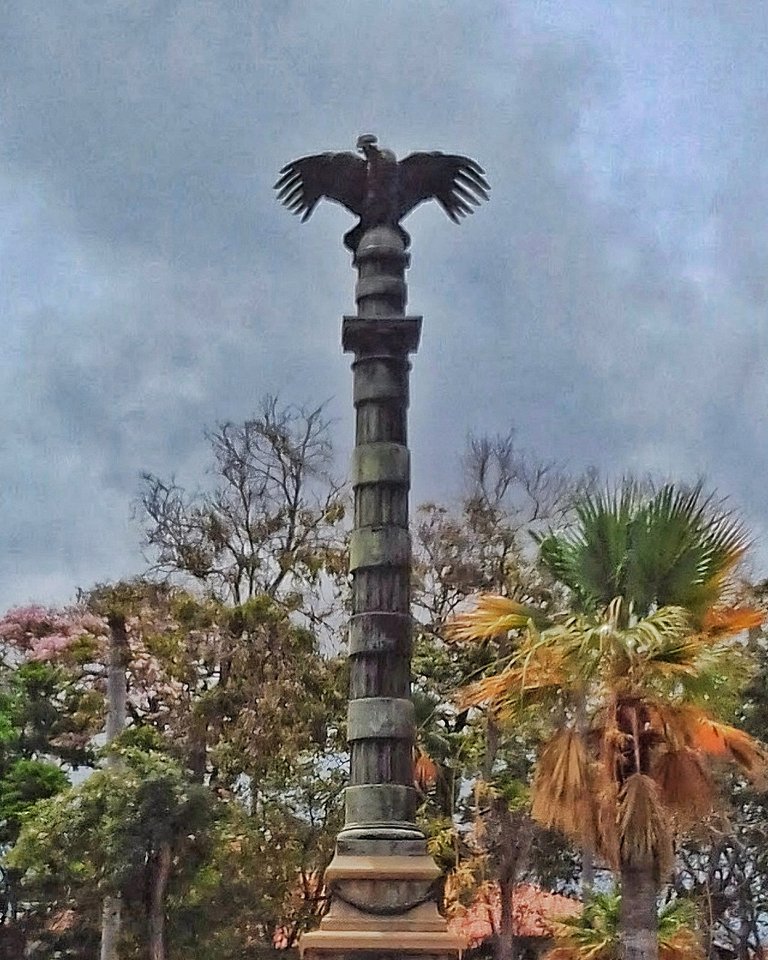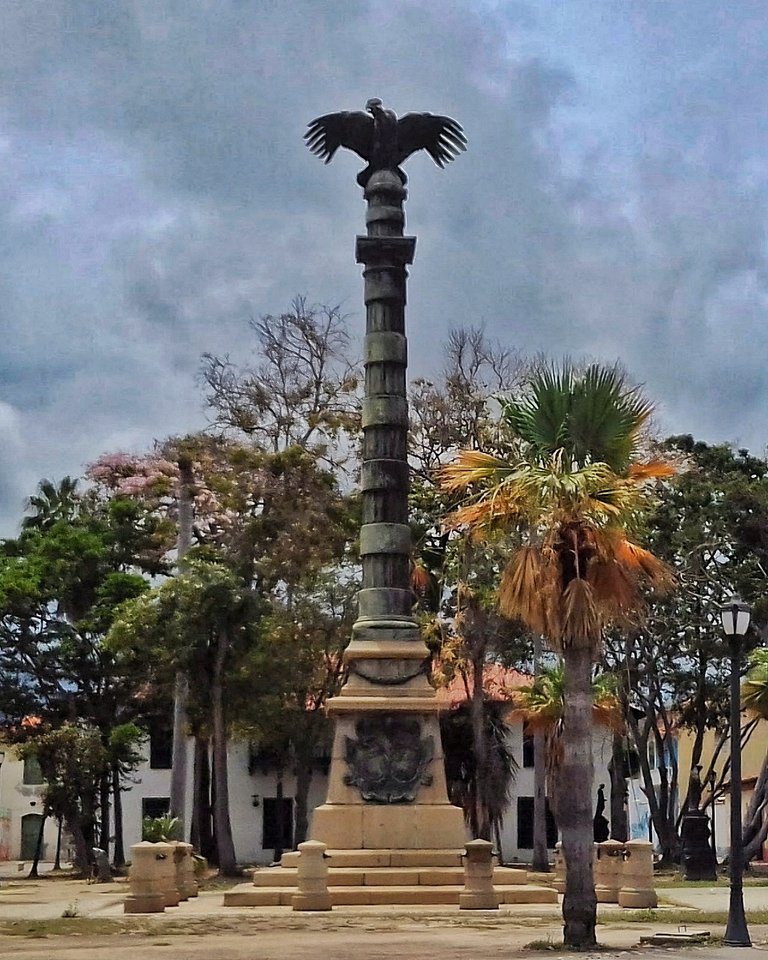"You cannot fly like an eagle with the wings of a wren.”
William Henry Hudson

Show Me a Photo Contest SMaP - Round 170
In the city of Puerto Cabello, located on the shores of the Caribbean Sea in the central region of Venezuela, is located this commemorative monument known as Plaza El Aguila (The Eagle Square), whose authorship is attributed to the French sculptor Enmanuel Frémiet, being elaborated in a workshop in Paris to then be moved to the place where it is currently located.
Built in granite and bronze, it was erected in 1896 to honor the memory of the ten American citizens who were captured, tortured and executed by the Spanish troops when they accompanied the Venezuelan independence hero Francisco de Miranda, during a failed attempt to disembark in Venezuelan lands in 1806.
The bird with its wings spread as a symbol of freedom, located at the top of the column, contrary to popular belief, actually corresponds to a condor, a bird that inhabits the Andes Mountains, and not to a bald eagle, an animal that represents the people of the United States of America.
I took these photos some years ago while I was taking a short trip to that port city, which is characterized by a very well preserved colonial area, and as I have described in previous posts, I usually make use of the editing tools offered in their free versions by the applications Picsart and Snapseed, in order to improve or highlight some element of my images, without modifying their essence.
En la ciudad de Puerto Cabello, ubicada a orillas del Mar Caribe en la región central de Venezuela, se encuentra este monumento conmemorativo conocido como Plaza El Aguila, cuya autoría se le atribuye al escultor francés Enmanuel Frémiet, siendo elaborado en un taller de París para luego ser trasladado al lugar donde actualmente se encuentra.
Construido en granito y bronce, fué erigido en 1896 para honrar la memoria de los diez ciudadanos estadounidenses que fueron apresados, torturados y ejecutados por las tropas españolas cuando acompañaban al prócer independentista venezolano Francisco de Miranda, durante un fallido intento de desembarco en tierras venezolanas en 1806.
El ave con las alas desplegadas como símbolo de libertad, ubicado en la parte superior de la columna, a diferencia de la creencia popular, corresponde en realidad a un cóndor, un ave que habita en la Cordillera de los Andes, y no a un águila calva, animal que representa al pueblo de los Estados Unidos de América.
Estas fotos las tomé algunos años atrás mientras realizaba un breve paseo a esa ciudad portuaria, que se caracteriza por poseer una zona colonial muy bien preservada, y como he descrito en posts anteriores, acostumbro hacer uso de las herramientas de edición que ofrecen en sus versiones gratuitas las aplicaciones Picsart y Snapseed, con el objetivo de mejorar o destacar algún elemento de mis imágenes, sin modificar su esencia.

All the Photos are of my Authorship, as well as the Edition of the same ones.
This is my entry for the #SMaP Contest. This is an initiative of @nelinoeva. I hope you enjoy it.
Esta es mi participación para el Concurso #SMap. Esta es una iniciativa de @nelinoeva. Espero que lo disfruten.

| Camera: | Samsung Galaxy J1 mini prime |
| Photo Editor: | Picsart / Snapseed |
| Location: | Puerto Cabello, Carabobo, Venezuela |
| Date: | 26-03-2017 |
